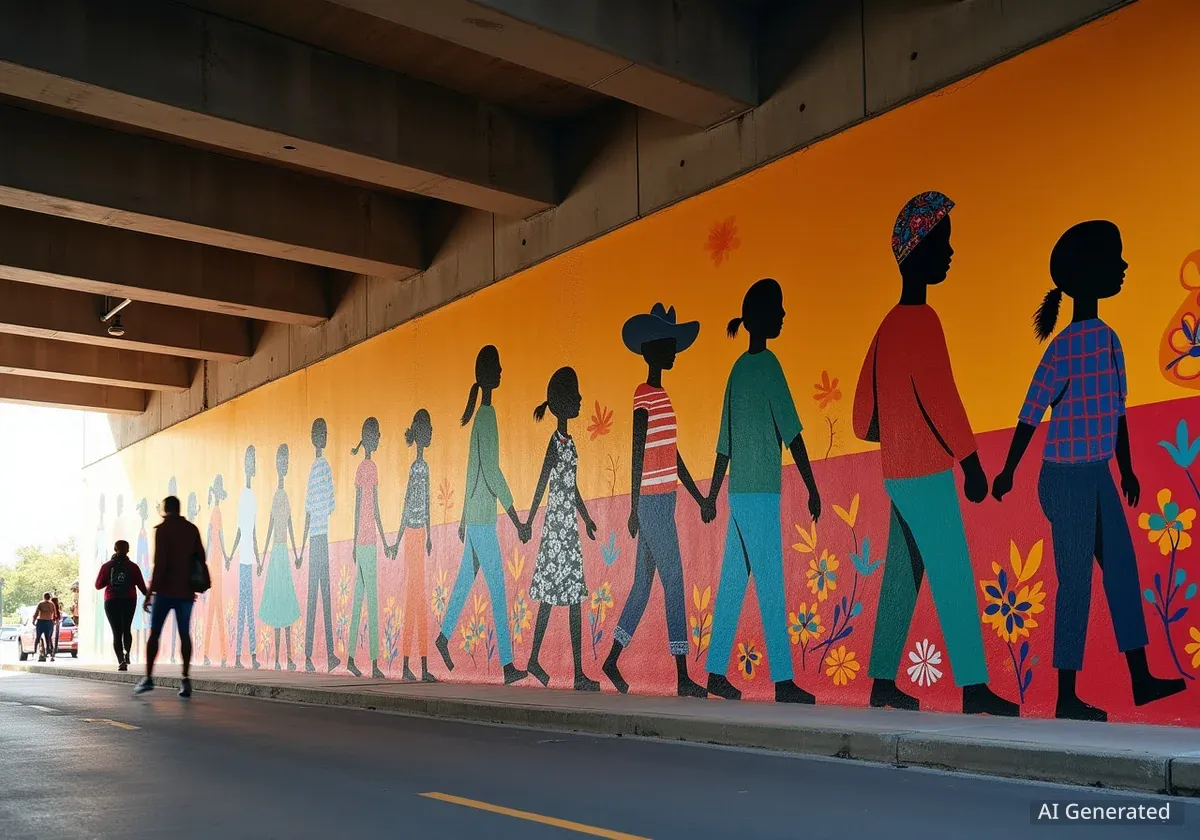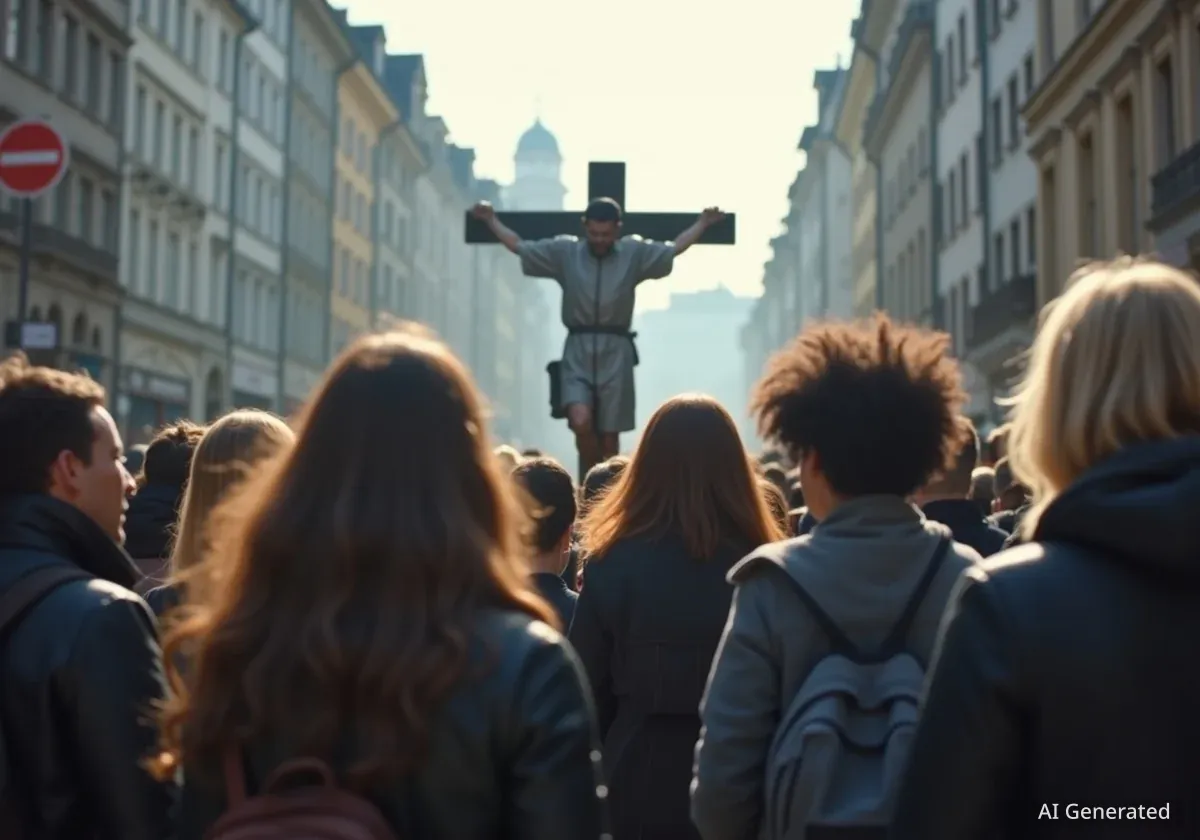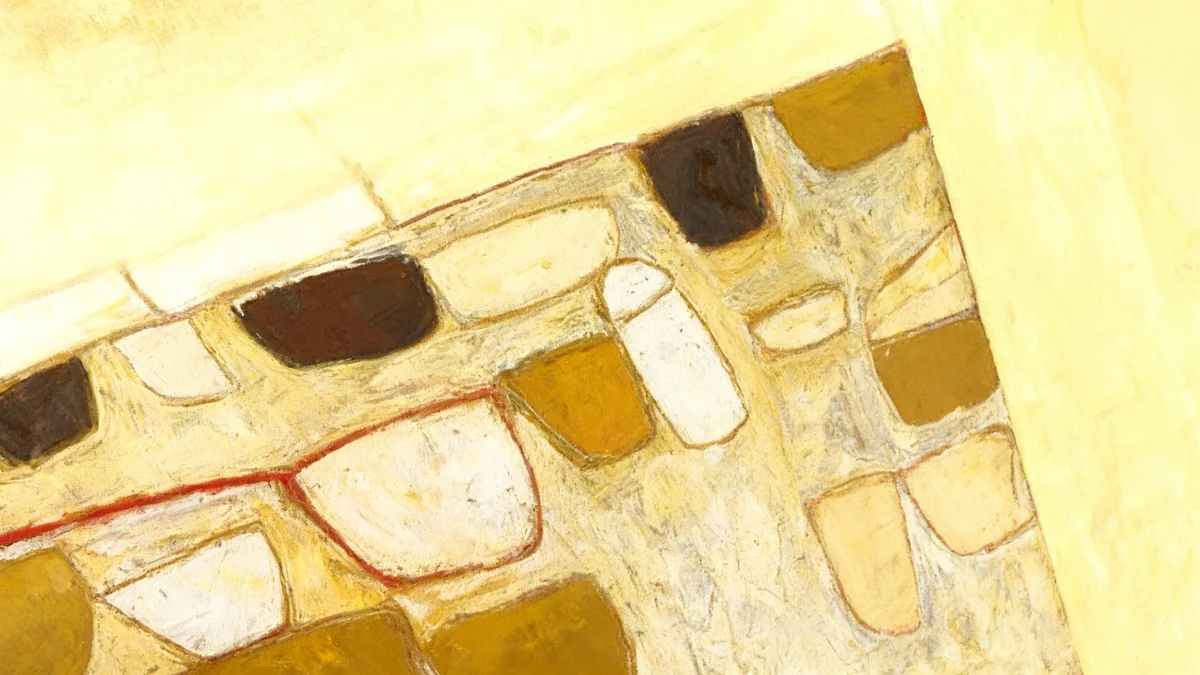Ten Mexican and Mexican American artists recently completed a series of murals in Seattle, transforming the Northeast Campus Parkway underpass. These public artworks explore themes of migration and belonging, providing a visual narrative for the community. The project is part of the 2025 MEXAM NW Festival, a collaboration between the Mexican Consulate and the city of Seattle, and coincides with National Hispanic Heritage Month, which began on September 15.
Key Takeaways
- Ten artists created murals in Seattle's Northeast Campus Parkway underpass.
- The art focuses on migration and belonging themes.
- The project is part of the 2025 MEXAM NW Festival.
- It aligns with National Hispanic Heritage Month, which starts September 15.
- Artists used their personal experiences to inform their work.
Art as a Statement on Migration
The murals serve as a powerful public statement. Each artist contributed a piece reflecting their identity and connection to their heritage. This collective effort gained particular significance for many artists due to recent increases in immigration enforcement. The art aims to foster empathy and understanding.
"I think that art has an obligation," stated artist Rene Julio. "I want to reach the ones that are against me to have some more empathy, and maybe, if one person can be safe because of this, that's a win, right?"
Julio, who studied art in Mexico City, a city known for its muralism and cultural resistance, shared his personal journey. He was undocumented in the United States for 19 years before becoming a U.S. citizen. His mural, primarily in red hues, shows an eagle's claws tying the hands of immigrants. This imagery conveys a strong message about the challenges faced by migrant communities.
Symbolism in the Artwork
Other murals feature significant symbols. Monarch butterflies, for example, represent migration. These insects undertake long journeys, mirroring the travels of many people. Other emblems highlight Chicano culture and Native American ancestry, such as hummingbirds, known as colibri in Spanish. These symbols connect the artists' present experiences with their historical roots.
Fact: National Hispanic Heritage Month
National Hispanic Heritage Month runs from September 15 to October 15. It celebrates the histories, cultures, and contributions of American citizens whose ancestors came from Spain, Mexico, the Caribbean, and Central and South America. The timing of the MEXAM NW Festival murals enhances this celebration.
Personal Narratives and Dual Identities
The artists drew heavily from their personal lives and experiences. Marisol Ortega, a first-generation Mexican American, explored the theme of dual identity. She described her experience as trying to find an identity in America while living culturally between two worlds. Ortega dedicated her mural, which features a large colibri, to her father, who passed away two months ago. This personal tribute adds a layer of emotional depth to her work.
Cristina Martinez also resonates with the concept of duality. As a Black and Mexican artist, her mural focused on a place where she felt the strongest sense of belonging: her grandmother's house. This space represented comfort and cultural connection during her upbringing. Martinez emphasized the role of her family in shaping her resilience and artistic drive.
"I think what I have pulled the most from the Mexican side of my family is my resilience and this like fire that lives inside me to just make all the things that I want to make happen, happen," Martinez explained. "And I wanted to kind of honor all of the women in my family that put that in me. Because of the sacrifices they have made, I am now here and can dream freely and be a mom and be an artist and just be me."
Context: Muralism in Mexico
Mexico has a strong tradition of muralism, often used for public education and social commentary. Artists like Diego Rivera, José Clemente Orozco, and David Alfaro Siqueiros used large-scale murals to depict Mexican history, revolution, and social justice. This historical context informs the contemporary work of artists like Rene Julio.
Collaboration and Community Impact
The artists involved in the project are based in the Pacific Northwest. They come from diverse artistic backgrounds and experiences. Throughout the painting process, the artists supported each other, sharing techniques and insights. This collaborative spirit strengthened the project and fostered a sense of community among the artists.
Marisol Ortega recalled a specific interaction with Carlos Aguilar, an experienced Los Angeles-born artist. "I was like, 'I'm having a really hard time blending this.' He's like, 'Here, let me show you a trick,'" Ortega recounted. Such exchanges highlight the mentorship and camaraderie present during the week-long effort.
The completed murals have garnered positive reactions from the public. Julie Wood, a visitor, expressed her emotional response. "It brings tears to my eyes," Wood said, observing the finished artworks. "It's just so moving the way it captures both heartbreak and hope." Wood had watched the artists work on the installation and felt a sense of awe seeing the finished project. "I'm stunned it's finished."
Project Details
- Location: Northeast Campus Parkway underpass, Seattle
- Number of Artists: 10 Mexican and Mexican American artists
- Festival: 2025 MEXAM NW Festival
- Partners: Mexican Consulate, City of Seattle
- Theme: Migration and Belonging
One prominent message splashed onto a mural wing reads, "We belong!" This phrase encapsulates the central theme of the MEXART Mural Project, affirming the presence and value of migrant communities in Seattle. The murals stand as a vibrant testament to cultural identity, resilience, and the power of art to communicate complex social messages. They invite passersby to pause, reflect, and engage with the stories depicted on the walls, strengthening the community's understanding of diverse experiences.




